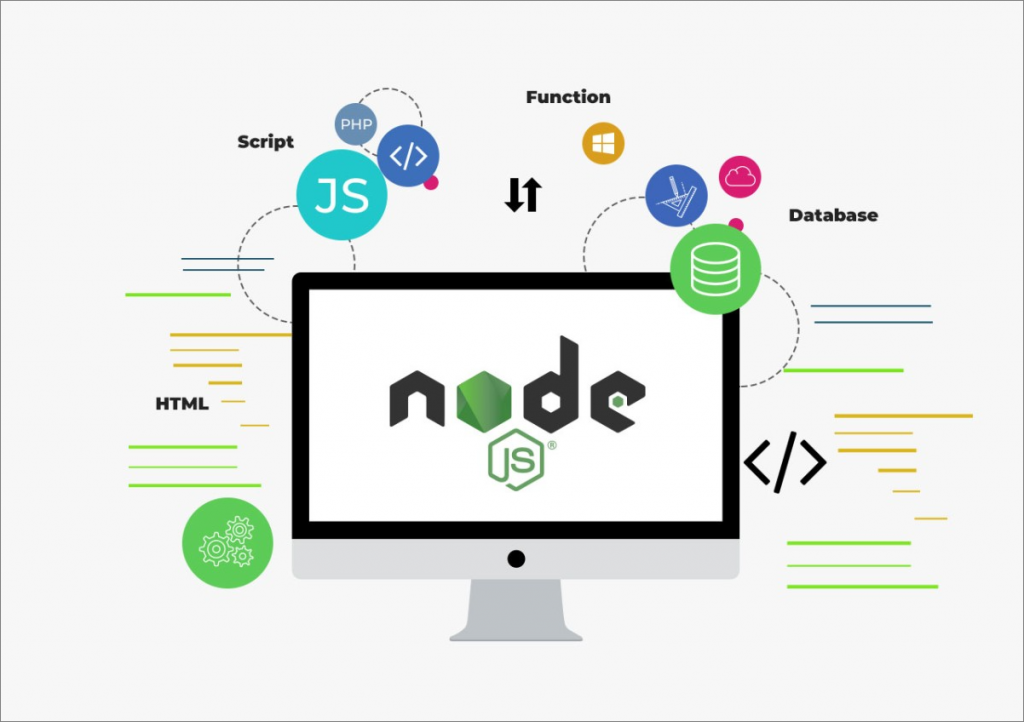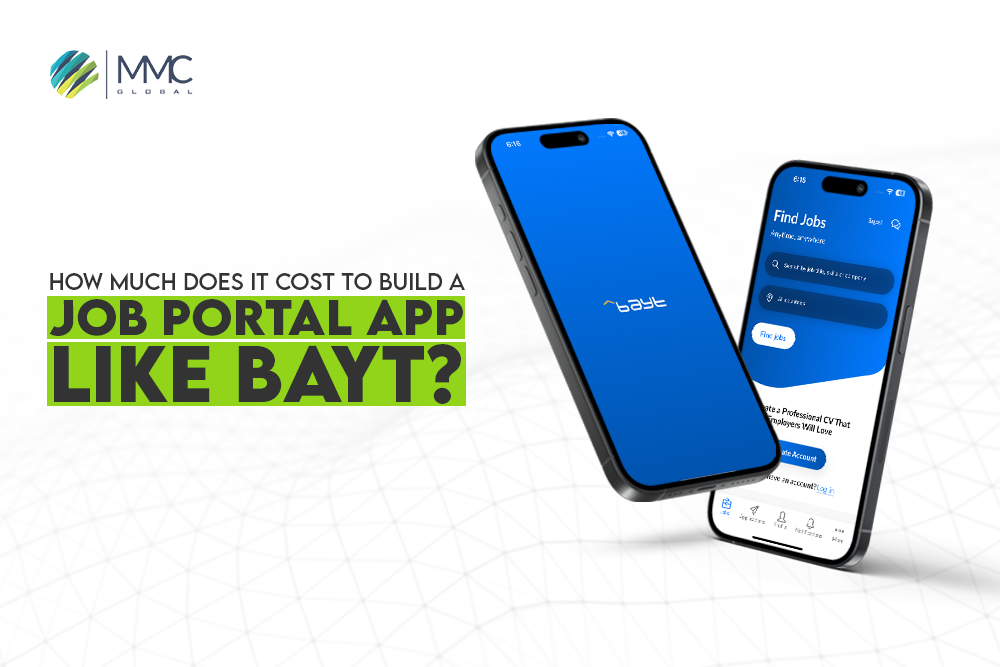How NodeJs Technology Is Better Than Other Backend Development
The modern problem has modern solutions that’s why technology keeps its way open to get lots of options for developers. NodeJs technology is one of the options to build the backend of web app pages as it is an open-source technology that runs on various platforms such as windows, Mac OS, Unix, etc.
Basically, Nodejs technology is a free, open-source, runtime server environment using JavaScript language. Moreover, NodeJS is a backend development that supports web apps on the server side and can access, create, open, read, write, delete, and close files on the server.

Although there are many companies that are providing NodeJS app development services for building server-side apps, MMCGBL is another one. We have successfully delivered 500+ NodeJS projects to our satisfied clients. We have a team that helps businesses to grow by implementing technology in their operations.
List of Popular Backend Technologies
NodeJs
NodeJs technology has contributed to not just backend web development but also frontend performance by being rightly implemented on the client side. It has also aided the development of the JavaScript ecosystem as a whole, as well as the improvement of modern JS frameworks like Angular, React, and Vue. To understand how Node leads the backend for most organizations, you, as a business, must know and master Node’s best practices.
PHP Development
PHP is among the most popular and widely adopted backend programming languages by many developers. It is suitable for both mid-size and large-scale applications. The PHP development framework, unlike NodeJs, is event-driven, making real-time connectivity with the backend server challenging.
.Net Development
The most popular Microsoft framework for both back-end and front-end development is. NET. It supports a wide range of languages. It is more practical for all sorts of enterprises, from micro to intermediate to giant. It’s open-source and cross-platform and makes creating websites, other services, and desktop/web apps easier. Depending on their preferences, .NET developers can write synchronous or asynchronous code.
Python
Python is prominent among ambitious new programmers since it is simple and straightforward to understand. It’s perfect for medium-to-large-scale software projects. Regardless of the fact that Python is amazing for designing applications that are rapid, productive, and deliver reasonable results, it does not function adequately.
Java Development
It is a widely-used programming language since it has several frameworks. It’s best for large-scale projects that require a lot of computing and data processing. When it comes to development time, NodeJs is easier to understand than Java, resulting in faster development when Nodejs is here to help instead of Java development.
Ruby
Ruby is ideal for SMBs and medium-sized projects. Because it is part of the JavaScript framework, it is well-documented and supported by a huge developer community. When compared to NodeJs, it has lost market share and community appeal in recent years, resulting in fewer modifications and deployments.
Alternatives of NodeJs Technology
Everyone understands that backend technologies play a crucial role in making the frontend appear its best. Backend technologies are in charge of everything.
The backend has a variety of languages, including PHP, Python, Java, .NET, Ruby, and a variety of other technologies.
So, what’s new with NodeJs when it comes to backend development? Why do businesses pick this for their business app? What distinguishes NodeJs from other backend programming languages? This blog contains all answers to your questions. So be ready to learn how Nodejs technology may be your go-to backend technology. So, let’s get this started.
NodeJs vs. PHP Development For Backend
PHP is a widely preferable language because it provides far greater server management system support. It is typically recommended for services that will use content management systems or relational databases.
It also requires less code; nevertheless, Nodejs technology makes code reusability much easier. Node also has a higher efficiency of execution and does a better job of transmitting data from the server in service calls.
PHP development recommends services that will use a relational database or CMS since it provides substantially more server management capabilities. It also requires less authoring while allowing software development companies to reuse code. NodeJs also offers faster processing and a way to export data from the server quickly via service calls.
NodeJs Vs. Python
Python is the best language for running simulations and machine learning on servers. NodeJs, on the other side, thrive in most types of web services, especially real-time applications. Unlike Python, Nodes supports asynchronous programming by default, allowing for increased flexibility.
Python is an object-oriented language similar to Java. In contrast to NodeJs, Python is useful in huge projects and performs well in domains such as AI and intensive calculative models, as well as other complicated app development. Python’s libraries make creating application logic simple. However, due to its architecture, performance is challenging and requires the support of technically talented programmers.
NodeJS Vs. Java
Node is the more prevalent and desirable alternative for desktop application development, whereas Java is a prominent platform for Android development. Threading is another key characteristic. Java enables multi-threaded web servers, which implies that code is working more efficiently in several threads. When big queries are made to Node, however, it is single-threaded, causing blocks and slowdowns. Node, on the other hand, is easier to learn and use than Java, with a faster development time and better hardware adaptability.
While Java and NodeJs both have similar runtime applications, their use cases are vastly different. NodeJs for the backend is more speedy when dealing with I/O applications because of the event loop, while Java has a pool of threads that is more effective for intricate operations. In a specific project, though, we may employ both as microservice architecture.
NodeJS vs .Net
.NET is a powerful Microsoft framework for backend and frontend development that supports various languages. It’s ideal for small and medium-sized projects. .NET is a free framework that may be used to build services, websites, and desktop programs on a number of platforms. In NodeJs, the developer must use asynchronous code, which implies that NodeJs technology focuses on improving CPU speed by avoiding thread context switching.
Conclusion
For backend development, Nodejs is used by all modern web browsers and a large proportion of websites. Because of its simplicity of application and versatility, it has been the most important language for some years. With NodeJs, however, JavaScript is not limited to the frontend and may be used beyond the browser. As a result, it is possible to build rapid and scalable apps using identical code on both the server and client sides, earning it one of the most popular full-stack frameworks.
However, if you want to use NodeJs technology as a backend in your app, you are not doing anything wrong. Hire a super experts Node JS team with MMCGBL and get your robust app with a proficient nodeJS codebase.
NodeJs is well-suited to data-intensive, real-time applications that span several devices. It’s also feasible to handle large files while they’re being uploaded by making use of the fact that HTTP requests and responses are essentially data streams and streams. They can also help you collect and visualize real-time data with the help of smart dashboards.



